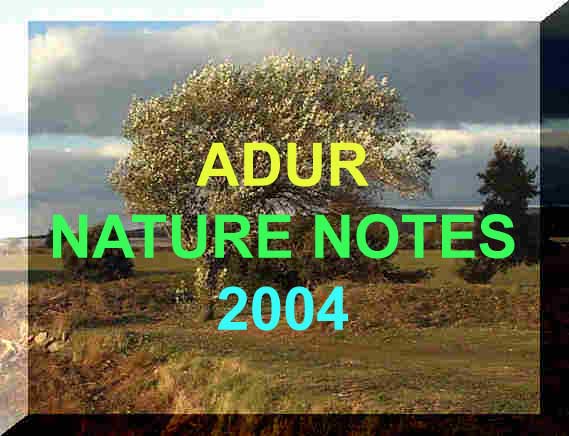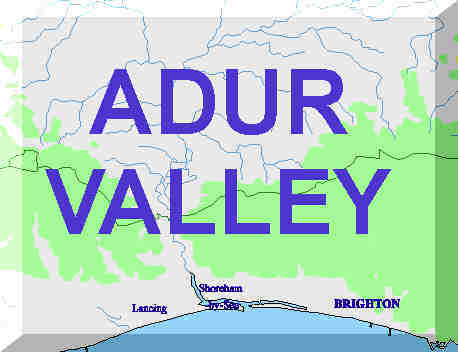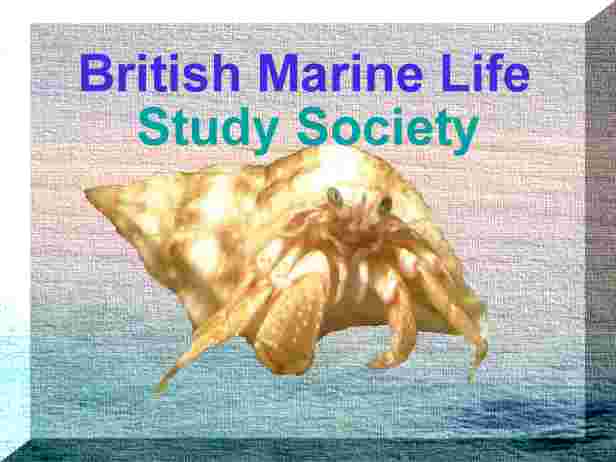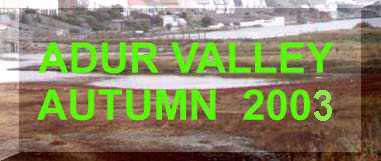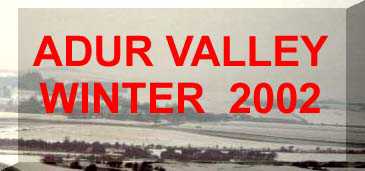
April
2004
Reports
by Andy Horton from personal observation unless
otherwise indicated
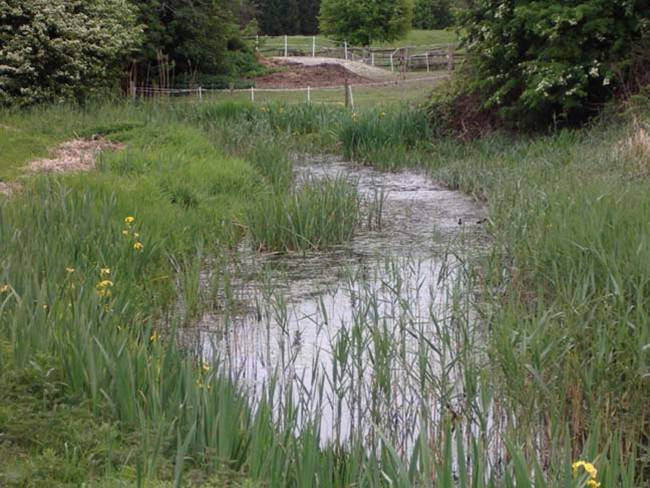
Stream
near (west of) the Waterworks, Old Shoreham
WILDLIFE
REPORTS
28
April 2004
It
was an extraordinary weather, a cloudless blue sky, sunny, a temperatures
up to 19.6ºC, a gentle breeze, but in the far north-east there was
a grey sky and distant thunder rumbled throughout the afternoon.
There
were just a handful of butterflies on the
wing.
Adur
Butterfly List 2004
27
April 2004
An
escaped small aviary bird which turned to be a Zebra
Finch landed on some weedy ground in north
Lancing next to me and proceeded to peck at seeds it found there. It looked
a bit dishevelled. (pic)
It
was not until I almost stepped on it that the large
speckled brown bird took to the air with a
flurry as the heavyweight took a second to become airborne from the Creeping
Thistle
and Stinging Nettle in the narrow field next to stream
that leads from the Steyning Road (A283)
to
the Waterworks. It was probably a hen
Pheasant.
Full
Report
The
streamside vegetation housed a badly injured Emperor
Moth, Pavonia
pavonia, which was too damaged to fly away and an Egg
Yolk Fungus, Bolbitius
vitellinus, that was so dried out that it had gone white as straw.
Adur
Levels 2004
26
April 2004
 As
the first Horseshoe Vetch
and Milkwort
were beginning to flower on the lower slopes
of Mill Hill, I observed the first skipper
butterflies of the year. An amorous pair of Grizzled
Skippers danced around the bramble borders,
with at least one Dingy Skipper
and two or more Brimstones.
The day flying micromoth Pyrausta
nigrata could conceivably be mistaken
for the Grizzled Skipper.
This moth is slightly more prevalent of the two. In the scrub in the north-west
of Mill Hill there were two Speckled
Wood Butterflies and a single Peacock
Butterfly. On the open upper
slopes there was another Brimstone
and a handful of Small Tortoiseshells,
orange in colour but not fresh, the orange dulled by age. In Shoreham
town there were a handful of Small
White Butterflies and a few Holly
Blues. This gives a total of eight butterflies
for the day. As
the first Horseshoe Vetch
and Milkwort
were beginning to flower on the lower slopes
of Mill Hill, I observed the first skipper
butterflies of the year. An amorous pair of Grizzled
Skippers danced around the bramble borders,
with at least one Dingy Skipper
and two or more Brimstones.
The day flying micromoth Pyrausta
nigrata could conceivably be mistaken
for the Grizzled Skipper.
This moth is slightly more prevalent of the two. In the scrub in the north-west
of Mill Hill there were two Speckled
Wood Butterflies and a single Peacock
Butterfly. On the open upper
slopes there was another Brimstone
and a handful of Small Tortoiseshells,
orange in colour but not fresh, the orange dulled by age. In Shoreham
town there were a handful of Small
White Butterflies and a few Holly
Blues. This gives a total of eight butterflies
for the day.
Adur
Butterflies Flight Times
Adur
Butterflies
UK
Moths Yahoo Group
UK
Leps Yahoo Group
On
the upper
slopes of Mill Hill the Morels
were dried out and at least one of two toadstools appeared to be eaten
out from the inside (they are hollow inside).
Fungi
of Shoreham
Mill
Hill Nature Reserve
25
April 2004
An
almost clear sky and although the highest air temperature of the year passed
the magic 20 ºC mark on the coast, reaching a maximum of 20.8
ºC at 5:15 pm.
The shade temperature in town at 6:15 pm
measured 20.6 ºC.
 24
April 2004 24
April 2004
A
resident Holly Blue Butterfly and
a passing male Orange Tip Butterfly graced
my south Lancing
garden (TQ 186 044).
I
flushed a couple of Red Partridges
hiding up in some cleared trees on New Monks
Farm adjacent to the private road on the western edge of this large
wasted area. The birds, which were distinctly red, flew off rapidly towards
the east.
23
April 2004
A
male Orange Tip Butterfly
and a Green-veined White Butterfly
were seen in my Shermanbury
garden. These were both first of the year. The Dripping
Tap Bird (Coal Tit)
is very noisy with
its non-stop dripping sounds. This is not as annoying as the Rooks
in the trees. A female Pheasant
has a nest in a bush. I have heard scratching from the bush from where
I nearly stepped on her a few days ago. The male Pheasant
strolled about just outside the back patio doors.
Upper
Adur East (Shermanbury Area) Nature Pages
Adur
Levels 2004
Five
species of butterfly have been sighted in
the vicinity of in my south
Lancing garden (TQ
186 044): Small
White, Brimstone,
Holly
Blue,
Peacock
and Comma.
This is the first time I have noted all five in the garden on the same
day. This the first Comma
in the Adur coastal area in 2004.
Lancing
Nature
Butterflies
of Lancing
22
April 2004
There
was a considerable amount of bird activity on the shingle
close to the beach huts near Shoreham Beach
Green. I fastened my binoculars and tried to find the birds that were well
camouflaged against the pebbles. The first birds seen were a handful of
Wheatears
very alert and upright. There was too much human disturbance and there
were two groups of much smaller birds. The first turned out to be House
Sparrows but the second group were more
vocal and restless. One of the birds sang from the roof of one of the beach
huts and then its red speckly breasts revealed these birds as Linnets.
The
white
water lily moved in the green water of
the pond in the back garden of 40 The Drive (near
Buckingham Park), (TQ 219 063),
and I was astonished to see the ungainly swimming of a Smooth
Newt, Triturus vulgaris, which
I had never seen in the pond before. It is always a mystery how newts find
their ponds: is it by chance wanderings or do they have preferences?

There
were no frog tadpoles
this year so I am not sure what it will feed on. The only plants were a
floating Water Soldier
and Duckweed.
Town
& Gardens 2004
Freshwater
Life of North-western Europe Smart Group
21
April 2004
Minutes
before sunset about 8:00 pm,
in a most extraordinary display of over a thousand birds that flew over
the downs above Highdown, Southwick, in a large black flock that swirled
in an undulating chain over half a mile long. It took two or three minutes
for the birds to fly over in groups of about ten, each followed by a small
gap at a height of about 25 metres (very rough estimate). These birds were
larger than Starlings
(although it was hard to judge their size) and without the white colour
of seagulls. The birds flew out to sea and disappeared.
Report
by Mike Burtt
Although
they did not fly like Starlings,
the idea of the huge flock feeding on the downs
and then flying back to their roost on the West
Pier, Brighton, seems the most likely explanation.
 20
April 2004 20
April 2004
It
was the long probing beak on the short turf of a Rook
on the top of Mill Hill that gave it away.
Its grey face was apparent even before I fastened my binoculars on this
solitary corvid. Only about one in a thousand large black corvids locally
are
Rooks,
the rest are Crows
with Jackdaws
classed as small.
A
solitary mushroom was amongst the still short grass near a Hawthorn bush.
I recognised it immediately as a Morel,
Morchella
esculenta, because of its unusual distinctive
appearance. I had not seen one before and although an edible species, I
left it in its place just south of the car park.
Adur
Fungi: Fruiting Times
Fungi
of Shoreham
17
April 2004
Goldfinches
are not common garden visitors (at least not in some parts of Shoreham
town) so a pair visiting the sunflower feeder in my south Lancing
garden (TQ 186 044) at
11:35
am were worth a mention.
 16
April 2004 16
April 2004
The
first Speckled Wood Butterfly
of the year was recorded on the footpath between the Lancing College entrance
road going towards Hoe Cottages on the route to Lancing
Clump.
Adur
Butterflies Flight Times
Adur
Butterflies
Amongst
the trees of Barton's Wood
to the east of Lancing Clump one
small bird of many with a black head (not covering its eye) and a grey
breast was was picked out for identification: I was surprised to see a
dozen or more Blackcaps in
the woods near the eastern car park.
Blackthorn
was blossoming in profusion.
15
April 2004
Three
Whimbrels
were seen on the River Adur
near the Toll Bridge.
Whimbrel
Report 2003
Adur
Estuary 2004
 A
warmer than usual April afternoon, reached
17.6 ºC, and brought the nectar seeking
insects out. A
Common Lizard, Zootoca
vivipara, skittered across the footpath
just south-west of the bridge over the A27 on the route
to Mill Hill. Dog
Violets showed better on the lower
slopes of Mill Hill, with
Red Campion,
Daffodils
and
Bluebells
in flower above the ridge on the upper
slopes. A Kestrel
hovered over the ridge and it dived, wings pinned close to its body for
an impressive display. Brown-tail,
Euproctis
chrysorrhea, Moth caterpillars
clambered over a Hawthorn, and it is these caterpillars that weave the
white tent or cocoon (pic). A
warmer than usual April afternoon, reached
17.6 ºC, and brought the nectar seeking
insects out. A
Common Lizard, Zootoca
vivipara, skittered across the footpath
just south-west of the bridge over the A27 on the route
to Mill Hill. Dog
Violets showed better on the lower
slopes of Mill Hill, with
Red Campion,
Daffodils
and
Bluebells
in flower above the ridge on the upper
slopes. A Kestrel
hovered over the ridge and it dived, wings pinned close to its body for
an impressive display. Brown-tail,
Euproctis
chrysorrhea, Moth caterpillars
clambered over a Hawthorn, and it is these caterpillars that weave the
white tent or cocoon (pic).
Mill
Hill Reports 2004 (Link)
Violets
of Mill Hill
14
April 2004
The
first Holly Blue Butterfly
of the year is seen in my south
Lancing garden (TQ
186 044) at 3:50
pm.
Lancing
Nature Notes
Adur
Butterfly List 2004
Small
White Butterflies and Small
Tortoiseshell Butterflies fluttered
on a sunny day with a blue sky and scarcely
a wisp of cloud, the air temperature reached 19.1 ºC at 1:34 pm. These
butterflies
were in their ones and twos over the gardens, but were most noted down
over the green open wharfage space at Fishersgate (Fishersgate
Bank) opposite Shoreham Harbour Power Station.
Southwick
Wildlife
13
April 2004
A
small greenish-brown bird made a short flight immediately in front of me
as I cycled past Widewater. It was nestled
down amongst the shingle and its camouflage was not all that successful.
When it scrambled to action stations it looked exhausted. This bird was
most likely an immigrant Chiffchaff,
but it did not call.
Adur
Coastal
A
Long-tailed
Tit in a bright plumage flew a metre or
so in front of me and then landed in a bush at the entrance of the layby
near Withy Patch, Lancing. I usually think of this tiny bird as one in
small flocks of a dozen or more birds in winter only as I have not seen
signs of their large nests in local trees. Fifteen minutes later I spotted
the silhouette of another one flying between the bushes south-east
of Old Shoreham Toll Bridge.
Adur
Levels
12
April 2004
 Clearing
out my shed in south Lancing (TQ
186 044) produced a variety of spiders. There
are over 650 different species of spider recorded in Britain. The photographed
specimen
was identified as a Steatoda
grossa, known as the Dark Comb footed Spider or False
Black Widow, but with sheer number of species of spiders, and with some
of them very close to each in appearance, it is often a problem in identifying
them for the generalist wildlifer. This predatory spider has an unpleasant
bite. Clearing
out my shed in south Lancing (TQ
186 044) produced a variety of spiders. There
are over 650 different species of spider recorded in Britain. The photographed
specimen
was identified as a Steatoda
grossa, known as the Dark Comb footed Spider or False
Black Widow, but with sheer number of species of spiders, and with some
of them very close to each in appearance, it is often a problem in identifying
them for the generalist wildlifer. This predatory spider has an unpleasant
bite.
Spiders
of Lancing
British
Spider Thumbnails
British
Spiders web page
British
Wild Spider Yahoo Group
A
small ladybird was black with just the two visible red spots. This seems
to be the Kidney-spot Ladybird,
Chilocorus
renipustulatus (pic).
Ladybird
Images
11
April 2004
The
hoverfly Syrphus ribesii visited
my back garden in south Lancing (TQ 186 044).
This
is a common species.
Hoverflies
of Lancing (including
a photograph)
Adur
Hoverflies
Lancing
Nature
9 April
2004

The
splendidly coloured Emperor Moth,
Pavonia
pavonia, rested among the grasses on Mill
Hill. It was discovered by Katherine Hamblett
and Tacita French at the top of the lower
slopes. The feeding plants for the caterpillars varies according to
location: it could be Bramble, Hawthorn, Elder, Creeping Cinquefoil or
a wide selection.
8
April 2004
Although
small specks through the binoculars, three Great
Crested Grebes now displayed distinctive
crests as they were seen resting on the calm sea off the Church of the
Good Shepherd, Shoreham Beach.
Marine
Life (Sussex Sea Life)
5 April
2004
 A
single Butterfish, Pholis
gunnellus, hid under a rock on Kingston
Beach. A single dirty grey Dogwhelk,
Nucella
lapillus, (a predatory gastropod, snail-like, mollusc) was
in the middle of laying egg capsules
under another rock at mid-tide level amongst the mussel
beds. This was surprising as the first recorded observation of the egg
capsules on Kingston Beach. The Dogwhelks were not seen on this beach from
1971 to 2001 and the absence may be because of TBT pollution, which prevented
the Dogwhelks from breeding. A
single Butterfish, Pholis
gunnellus, hid under a rock on Kingston
Beach. A single dirty grey Dogwhelk,
Nucella
lapillus, (a predatory gastropod, snail-like, mollusc) was
in the middle of laying egg capsules
under another rock at mid-tide level amongst the mussel
beds. This was surprising as the first recorded observation of the egg
capsules on Kingston Beach. The Dogwhelks were not seen on this beach from
1971 to 2001 and the absence may be because of TBT pollution, which prevented
the Dogwhelks from breeding.
Trouble
with Dogwhelks
Lancing
Beach 2004
British
Marine Life Study Society
3 -
4 April 2004
After
two days of sunshine and temperatures up 17° C, the rain and Strong
Breezes (gusting to Gale Force 8) returned.
2 April
2004
Tottington
Wood south-east of Small Dole provided the
first
Comma Butterfly
of the year, together with a
couple of snakes
curled up on a bank in the sun. These were not identified but thought to
be
Adders.
1
April 2004
An
interesting and rather disturbing observation was discussed by four different
people tonight, and this concerns the diminishing local Common
Frog population in Shoreham-by-Sea. In
two garden ponds in the back garden of 40 The Drive (near Buckingham Park),
(TQ 219 063), in Gordon Avenue near
Shoreham town, and in Adur Drive near Old Shoreham,
there has been an absence of frog spawn being laid this year. In the first
two cases it has been the second year in succession that no spawn has been
laid, when in previous years the excessive spawn was too much for the small
ponds, and in the first location over a hundred adult frogs were found
on one occasion in the garden. All three ponds have been regular spawning
areas for frogs for at least a decade and for over 20 years for two of
them. All four observers reported dead frogs.

I thought
I observed a marked absence or reduction of frog spawn on the Adur
Levels last year but I did not investigate this properly.
There
are a few other reports from other parts of England saying that their frogs
are absent this year. It is not enough to detect a trend. At
least one pond in Shoreham has surplus frog tadpoles.
Garden
Web Page
Town
& Gardens 2004
Freshwater
Life of North-western Europe "Smart Group"
Froglife
March
2004 Reports

Mill
Hill 2004 (with new map)
History
of Mill Hill
Mill
Hill News Reports 2004
Chalk
Downs 2004
Flora
of Shoreham-by-Sea
MultiMap
Aerial Photograph of the Adur Levels and Downs
Urban
Wildlife Webring
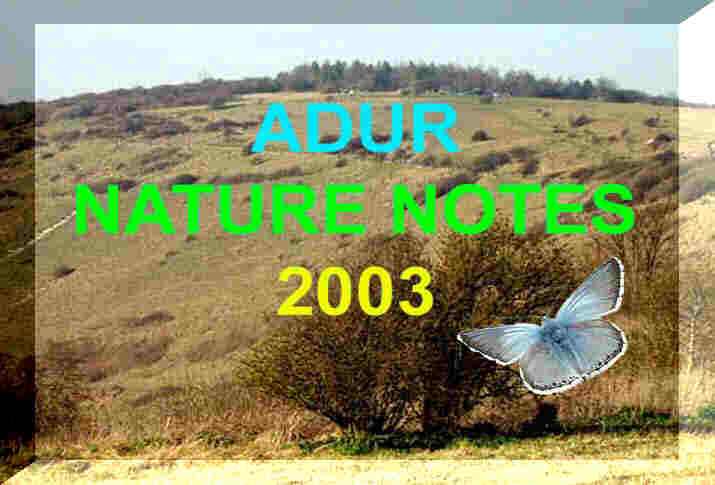 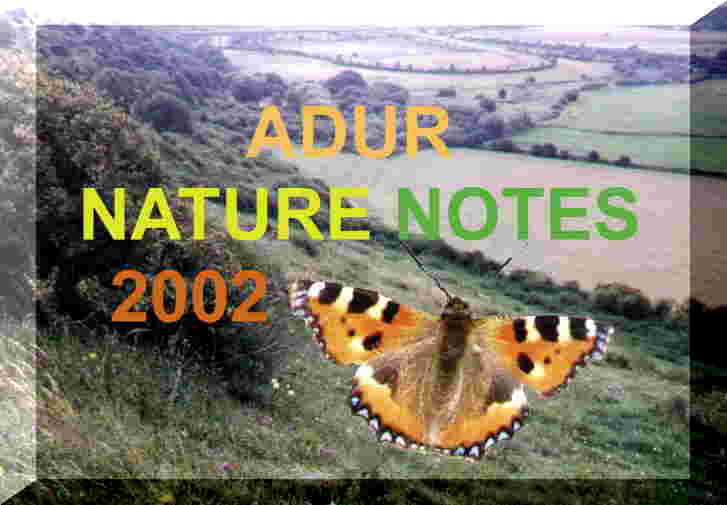
ADUR
NATURE NOTES 2000
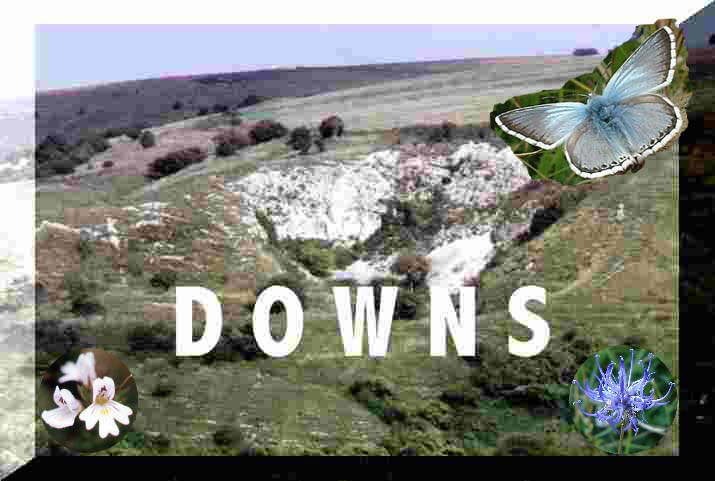

EMail
Address for sending in wildlife reports from the lower Adur valley
Contributions
are welcome, especially high quality images
Only
a selection will be included and only reports with the name of the reporter
|


